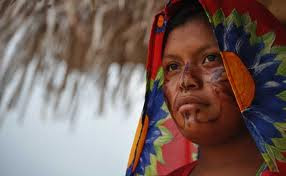
Stone cross carved into the rock, Tiwanaku, Bolivia.

Entrance to the Kalasasaya. Below, the Kalasasaya in the background.


Wall of the Kalasasaya.

Ruins of the Puma Punku.

The original land of the Nephites.
"In the Book of Mormon, the land of Lehi-Nephi (also referred to as the land of Nephi) is the homeland of the Nephites in the early times of the Book of Mormon. The land is later conquered by the Lamanites and the remaining Nephites flee to the land of Zarahemla, home of the Mulekites. In later years, an expedition under Zeniff returns to Lehi-Nephi to re-colonize the area, and at first the Lamanites allow them to settle. Zeniff, his son Noah, and Noah's son Limhi rule as kings over their people in the land of Lehi-Nephi. Ultimately the Nephite settlers depart the land of Nephi due to Lamanite oppression. They are led by Ammon, the leader of a party sent by king Mosiah son of king Benjamin to learn the fate of Zeniff's group. They return to Zarahemla as refugees.
According to the Book of Mormon, the land of Nephi situates south and at higher elevation relative to Zarahemla. A strip of wilderness, running east and west divides the land of Nephi from the land of Zarahemla. In the first century B.C., the lands of Nephi and Zarahemla were bordered on the east and on the west by bodies of water called respectively “the east sea” and “the west sea”."

Walls around the temple Kalasasaya.

Tiahuanaco gate 1877.

Tiwanaku, Bolivia
Though Bolivia is not always the safest and most stable destination to visit, the South American country has a wealth of wonders to explore. The ancient pre-colonial city of Tiwanaku is one of Bolivia’s veritable jewels and was a de facto base of power for an empire that virtually ran the Andes.






















































